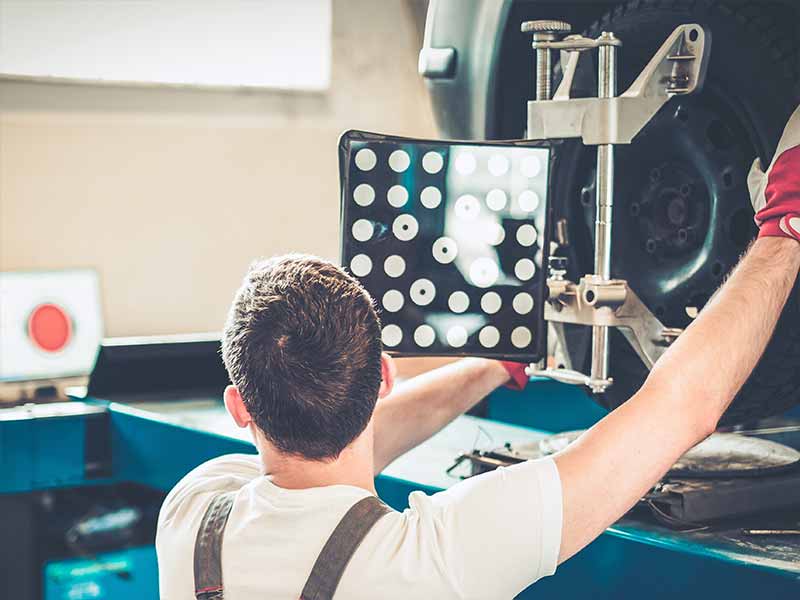Have you ever noticed your car pulling to one side or maybe felt a weird vibration in your steering wheel? Or maybe your tires are wearing down unevenly? If you’re experiencing any of these issues, then it could be a sign that your wheels are out of alignment.
How Do You Know When You Need An Alignment?
Bad Alignment Symptoms
- Uneven Tire Wear Patterns
- Pulling To One Side
- Crooked Steering Wheel
- Steering Wheel Vibration
- Unusual Handling Problems
- Tire Or Suspension Noise
Wheel alignment is an often overlooked aspect of car maintenance, but it’s important to keep your vehicle running smoothly and prolong the life of your tires.
In this article, we’ll go over the signs that indicate you need an alignment and what causes alignment problems.
Let’s take a closer look.
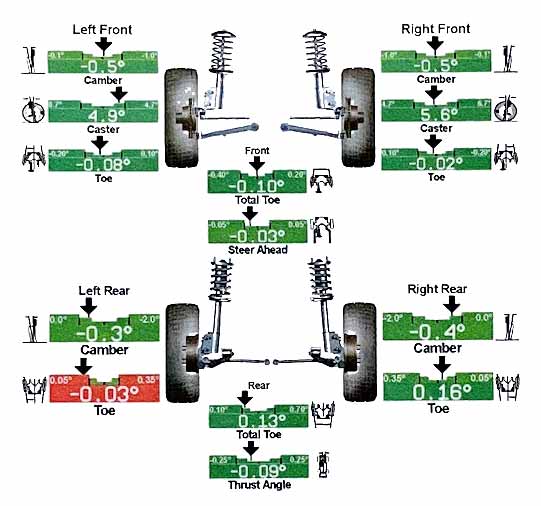
1. Uneven Tire Wear Patterns
Uneven tire wear patterns can be a sign that you need an alignment. If your wheels are not correctly aligned, they can cause uneven wear on your tires, which can lead to premature tire wear and even tire failure.
One of the most common signs of uneven tire wear is feathering. This can be caused by a toe misalignment, which means that the wheels are not pointing straight ahead. Feathering occurs when the tread on one side of the tire is worn down more than the other, causing a scalloped pattern.
Another sign of uneven tire wear is cupping, which looks like small dips or cups in the tire tread. Cupping can be caused by a variety of issues, including worn suspension parts, but it can also be a sign of a camber misalignment, which means that the wheels are tilted too far inward or outward.
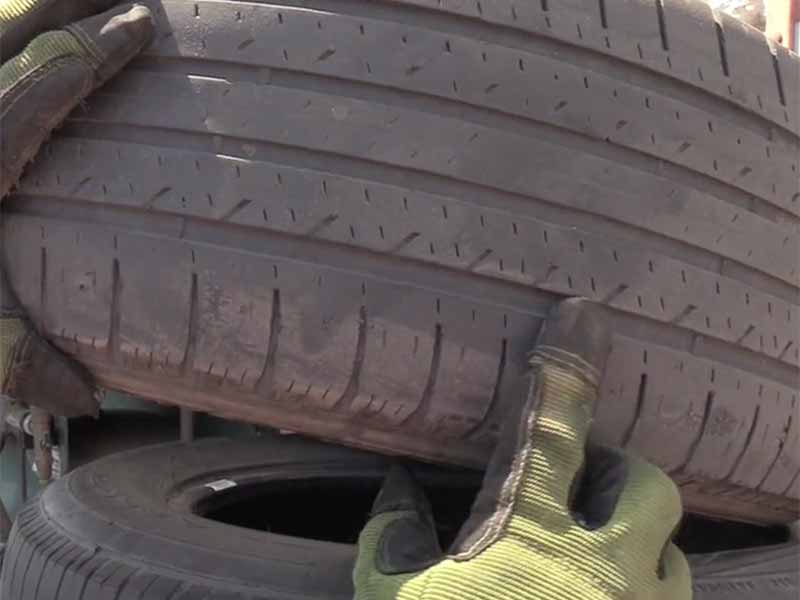
2. Pulling To One Side
Pulling to one side can be a sign that you need an alignment. If your car pulls to the left or right while driving on a straight, flat road, it can be a sign that your wheels are misaligned.
There are a few reasons why your car might be pulling to one side. One reason is that your wheels are misaligned, which means that they’re not pointing in the same direction. This can cause your car to pull to one side or the other. Another reason is that your tires might be unevenly inflated or worn, which can also cause pulling.
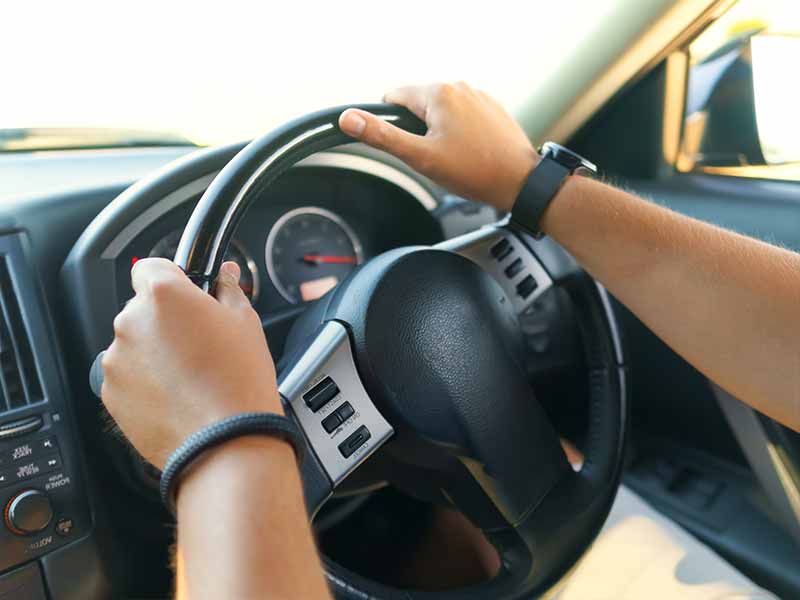
3. Crooked Steering Wheel
If you’ve noticed that your steering wheel is crooked even when you’re driving straight, it could be a sign that you need an alignment.
A crooked steering wheel can mean that your tires are not pointing in the correct direction together. The tires will want to track to the left or right when the steering wheel is in the centered position, so you’ll have to adjust by slightly turning the steering wheel to one side.

4. Steering Wheel Vibration
When your wheels are misaligned, it can cause your car to vibrate or shimmy, which can be felt through the steering wheel.
Misaligned wheels can cause your tires to wear unevenly, which can lead to vibrations in the steering wheel. A variety of other issues, such as worn suspension components or unbalanced tires, can also cause this.
However, if you’re experiencing this issue, it’s always a good idea to have your alignment checked by a professional mechanic.
5. Unusual Handling Problems
One of the signs that you may need an alignment is when you experience unusual handling problems with your vehicle. For instance, a feeling of looseness or sloppiness in the steering. This can make it difficult to steer the car or truck precisely, which can be dangerous and make it harder to maintain control of the car or truck.
If you notice that your vehicle is leaning or swaying more than usual when making turns or going around corners, it could be another sign of misalignment. This could cause the tires to wear unevenly, leading to more significant problems over time.

6. Tire Or Suspension Noise
A humming or whining sound is one of the most common noises associated with an alignment problem. This is usually caused by uneven wear on your tires, which can create a “cupping” effect. Essentially, your tire’s surface becomes uneven, which can cause noise as you drive.
Another noise you might hear is a clunking or banging sound. This can be caused by loose or worn suspension components, which can be a result of driving with poor alignment for an extended period of time. If you hear this type of noise, it’s important to get your car inspected as soon as possible to prevent further damage to your vehicle.
Finally, you might also hear a squealing or screeching noise coming from your tires. A number of different issues can cause this, but it’s often a sign that your tires are worn or misaligned. If you’re hearing this type of noise, it’s a good idea to have your tires checked out by a professional to see if an alignment is needed.
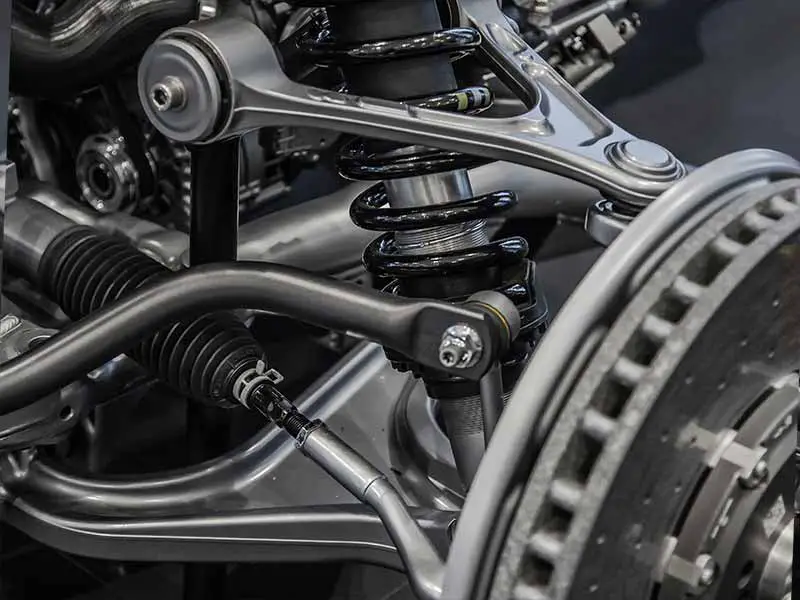
What Causes Wheel Alignment Problems?
Various factors can cause wheel alignment problems, such as hitting a curb or pothole, worn-out suspension parts, or even just regular wear and tear over time. Even minor impacts with curbs or other obstacles can throw off the alignment of your wheels, causing problems like uneven tire wear or steering issues.
The suspension system is responsible for keeping your wheels and tires in the correct position, and if any of the parts are worn out or damaged, it can cause alignment issues. Worn-out suspension parts can also contribute to wheel alignment problems. This is why it’s important to check your suspension system regularly, especially if you notice any signs of alignment problems.
In some cases, wheel alignment issues can also be caused by manufacturing defects or improper installation of new parts. This is why choosing a reputable auto shop when getting alignment work done and having regular inspections to catch any problems before they get worse is important.
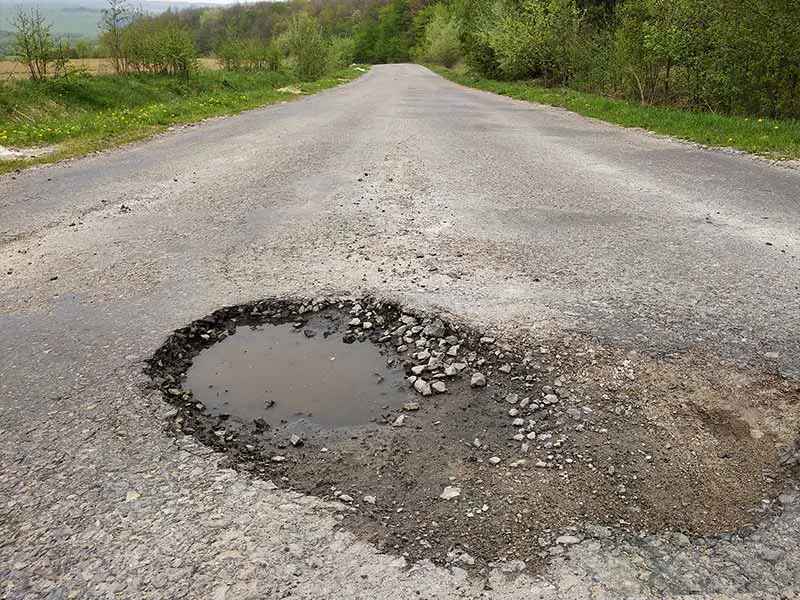
How Often Should You Get An Alignment?
Getting regular wheel alignments is one of the best ways to keep your car driving smoothly and to extend the lifespan of your tires.
We recommend having an alignment service performed every 10,000 miles and having all 4 tires rebalanced at the same time. However, you should check your alignment as soon as possible if you notice any signs of alignment issues, such as uneven tire wear, pulling to one side, or a crooked steering wheel.
If you frequently drive on rough or unpaved roads or hit potholes, curbs, or other obstacles, you may need to get your alignment checked more regularly. The same goes for those who often carry heavy loads or tow trailers, as this can cause your alignment to shift over time due to the added stresses.
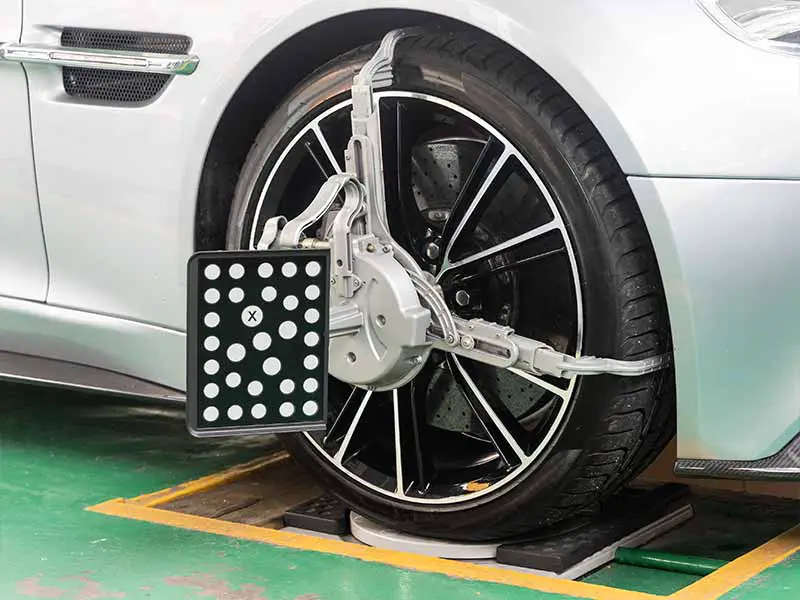
How Much Is A Wheel Alignment?
The cost of a wheel alignment can vary depending on a few factors, such as where you live, the type of vehicle you have, and the specific alignment service needed.
A standard alignment for a passenger car or light truck can cost anywhere from $50 to $150. However, the cost may be higher if your vehicle requires a more complex alignment, such as a four-wheel or thrust angle alignment.
Resources
Below are some links you may find helpful when learning about tires
Final Thoughts
Uneven tire wear, pulling to one side, a crooked steering wheel, steering wheel vibration, unusual handling problems, and tire noise are all indicators that you may need an alignment.
By getting regular alignments and paying attention to these warning signs, you can prolong the life of your tires, improve your vehicle’s handling, and ensure a smoother, safer ride.
Remember, it’s better to be proactive about your vehicle’s maintenance than to wait until a problem gets worse and potentially more expensive to fix.
Good luck and happy motoring.
